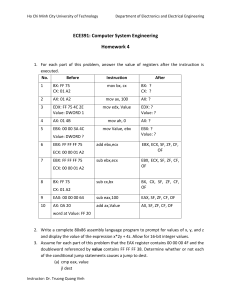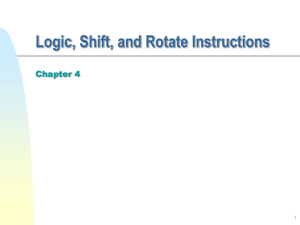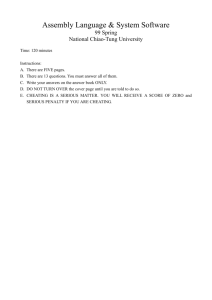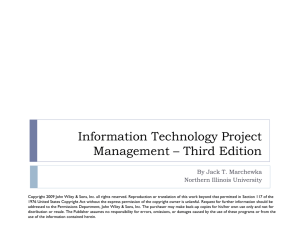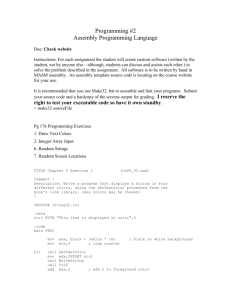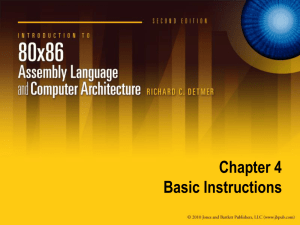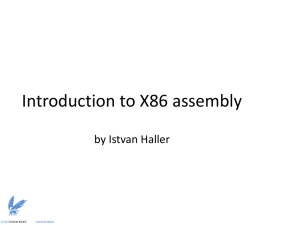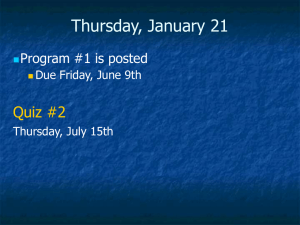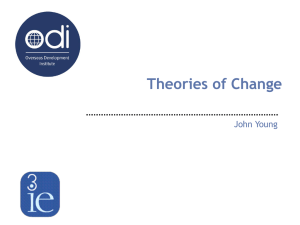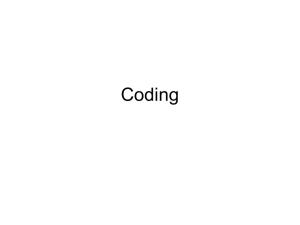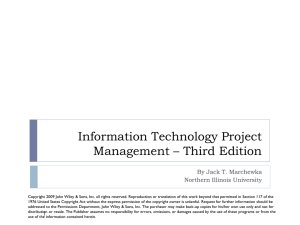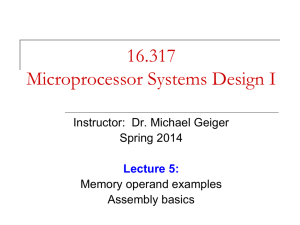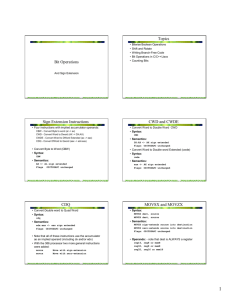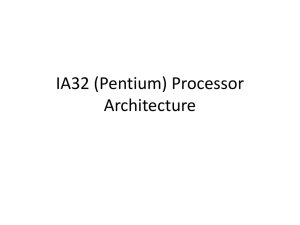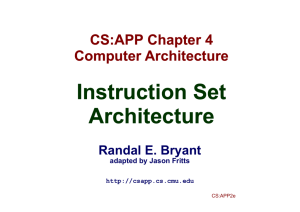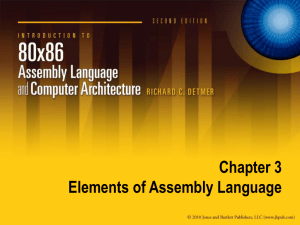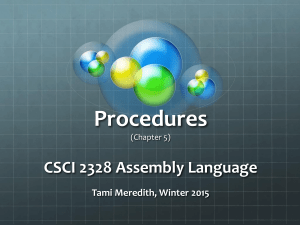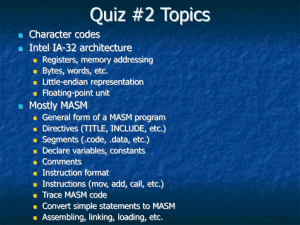CET3510 – Lecture 4
advertisement
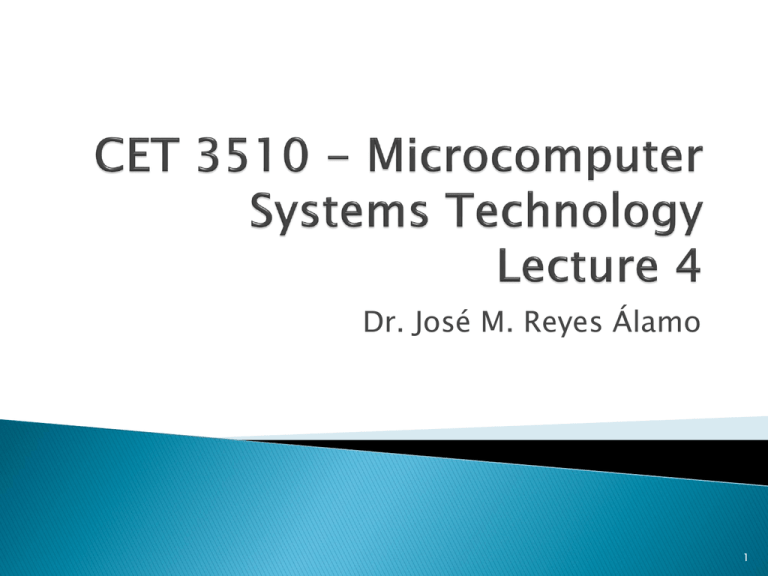
Dr. José M. Reyes Álamo 1 p q p AND q True True True True False False False True False False False False p q p OR q True True True True False True False True True False False False p q p XOR q True True False True False True False True True False False False p NOT p True False False True and( source, dest ); or( source, dest ); xor( source, dest ); not( dest ); Source has to be a constant, memory, or register operand dest operand must be a memory or register operand Assuming you already have variables p and q C++ code for AND is r = p && q; HLA Code: mov( p, eax ); mov( q, ebx ); mov( eax, ecx ); and( ebx, ecx ); mov( ecx, r ); Assuming you already have variables p and q C++ code for OR is r = p || q; HLA Code: mov( p, eax ); mov( q, ebx ); mov( eax, ecx ); or( ebx, ecx ); mov( ecx, r ); Assuming you already have variables p and q C++ code for XOR is r = (p && !q) || (!p && q); HLA Code: mov( p, eax ); mov( q, ebx ); mov( eax, ecx ); xor( ebx, ecx ); mov( ecx, r ); Assuming you already have variable p C++ code for NOT is r = !p; HLA Code: mov( p, eax ); not( eax); mov( eax, r ); Shift left move each bit n positions to the left ◦ Lower order bits becomes a 0 ◦ Higher order bit becomes a carry out HLA code: shl( count, dest ) ◦ count = positions to shift (either CL or a constant) ◦ dest = register or variable Shifting n places to the left, is equivalent to multiplying by the base (radix) n times Shift right moves each bit n positions to the right ◦ Higher order bits becomes a 0 ◦ Lower order bit becomes a carry out HLA code: shr( count, dest ) ◦ count = positions to shift (either CL or a constant) ◦ dest = register or variable Shifting n places to the right is equivalent to dividing by the base (radix) n times Be careful with arithmetic (division) Shifting right only works for unsigned number, as adding 0 to the high order bit might change the sign under two’s complement representation. ◦ To solve this problem the shift arithmetic right operation preserves the higher order bit ◦ HLA code: sar( count, dest ) count = positions to shift dest = register or variable Rotate Left: shift all the bits to the left and copies the carry bit to the Lower Order bit ◦ HLA code rol ( count, dest ) count = positions to shift dest = register or var Rotate Right: shift all the bits to the right and copies the carry bit to the Higher Order bit ◦ HLA code ror ( count, dest ) count = positions to shift dest = register or var To avoid an undefined state, is better to rotate through the carry rather than directly: ◦ rcl( count, dest ) ◦ rcr( count, dest ) Memory packing is space-efficient but computationally expensive Example of a packed date Assuming you have the values for: year, month, and day (int8 each) and a variable called packedDate (int16) then: mov( 0, ax ); mov( ax, packedDate); mov( month, al ); shl( 5, ax ); or( day, al ); shl( 7, ax ); or( year, al ); mov( ax, packedDate ); mov( packedDate, ax ); and( $7f, al ); // Retrieve the year value. mov( al, year ); mov( packedDate, ax ); // Retrieve the day value. shr( 7, ax ); and( %1_1111, al ); mov( al, day ); mov( packedDate, ax ); // Retrive the month value. rol( 4, ax ); and( %1111, al ); mov( al, month ); An example of a 4-byte date architecture ◦ A byte for Day ◦ A byte for Month ◦ 2-bytes for Year Multiplication is a single-operand instruction ◦ Signed and unsigned multiplication supported (mul, imul) ◦ Need to load first the accumulator into a register ◦ Has to be one of AL (8-bits), AX (16-bits), EAX (32bits) ◦ Result is stored in: AX, DX:AX, EDX:EAX Results may require as many as 2*n bits ◦ If numbers are too large might get overflow ◦ HLA provides a modification to make multiplication easier mul (source, register) | imul (source, register) ◦ source can be a register, memory address or constant ◦ register must be one of AL, AX, EAX Intel 80x86 HLA Modification Intel 80x86 HLA Modification Division performs a 64->32, 32->16, 16->8 operation ◦ HLA commands: div, idiv ◦ 8-bit: divides AX by the operand, quotient into AL, remainder into AH ◦ 16-bit: divides DX:AX by the operand, quotient into AX, remainder into DX ◦ 32-bit: divides EDX:EAX by the operand, quotient into EAX, remainder into EDX ◦ For unsigned, the numerator must be 16,32,64 when the denominator is 8,16,32 respectively To accomplish this you need to zero extend the numerator (loading zeros to AH, DX, EDX respectively) ◦ For signed integers you need to sign extend the numerator (using the commands cbw, cwd, cdq) ◦ Be careful with: dividing by zero, overflow Assembly doesn’t provide instructions for the remainder but HLA does: mod(operand) HLA Syntax: cmp(Left, Right) Used for comparisons, same as sub, but instead of returning the result only sets certain bits in the flags register. ◦ Z: The zero flag is set if and only if Left = Right. ◦ S:The sign flag is set to one if the result is negative. ◦ O: The overflow flag is set if the difference of Left and Right produced an overflow or underflow. ◦ C:The carry flag is set if subtracting Right from Left requires a borrow. The set on condition (or setcc) instructions set a single byte operand (register or memory location) to zero or one depending on the values in the flags register These instructions store a zero into the operand if the condition is false, a one if the condition is true Useful for mapping the result of a comparison to a Boolean value
